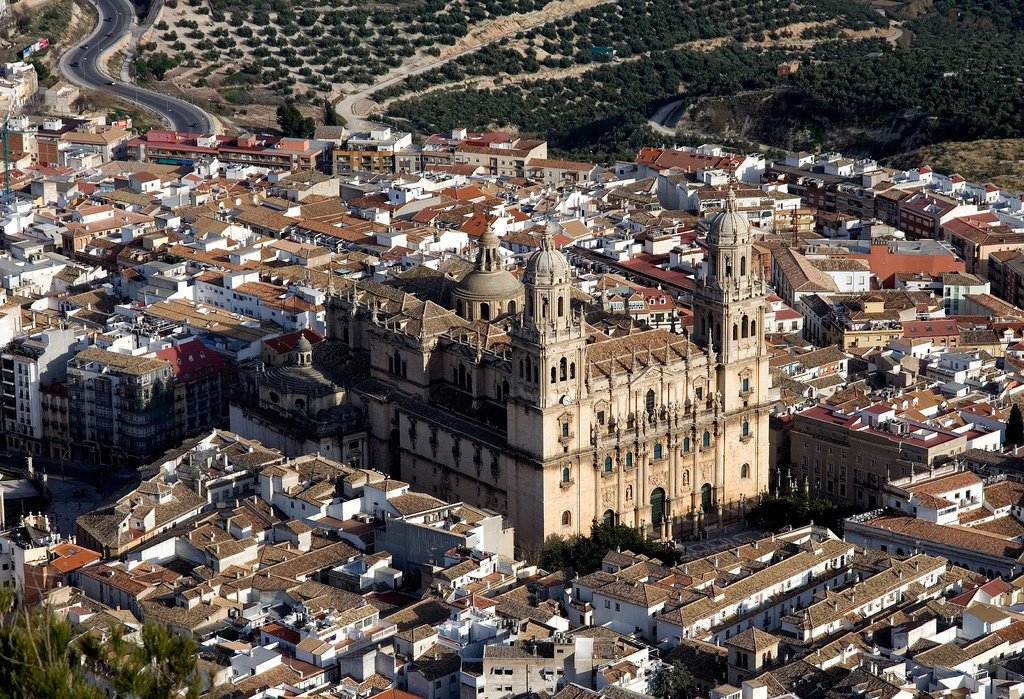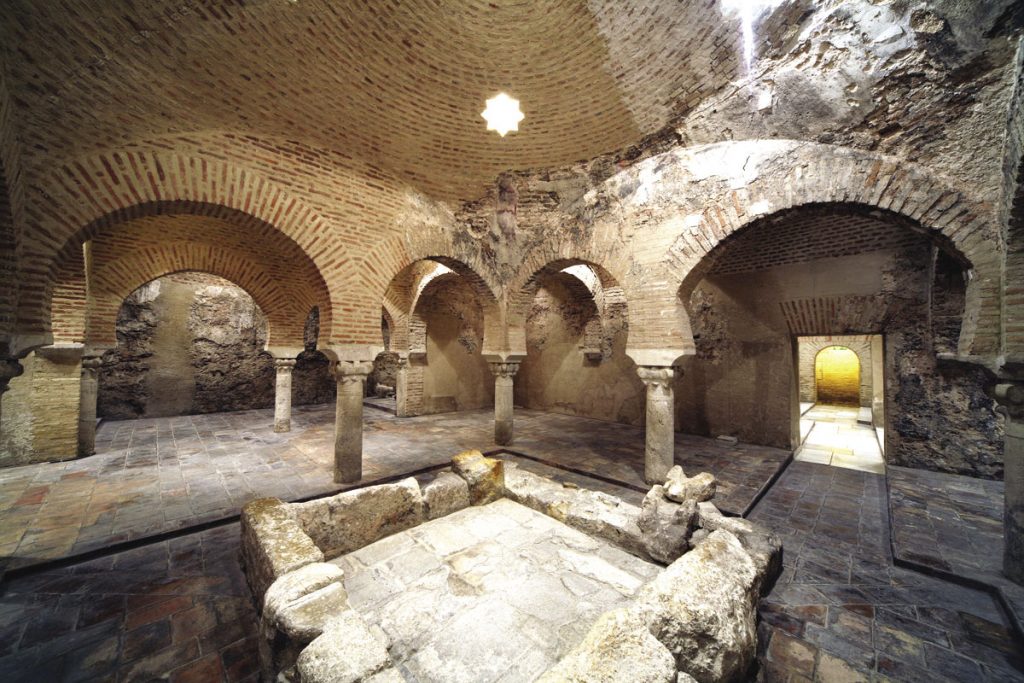The presence of a Jewish community in Jaen is first recorded in 612, when a king’s edict forbade Jews to own Christian slaves. If the Jewish population reached its peak during the seventh century, there were most probably Jews already during the Roman period. The geographer Abd al Nur Al-Himyari mentions during the ninth century a mikveh in Jaen, known as Isaac bath. The walls of the mikveh were discovered in 2002. It most likely belonged to Isaac Ben Saprut, father to the well-known physician and diplomat Hasday Ben Saprut. In 1391, after violence erupted because of Vicente Ferrer’s preachings, Jews converted, and the Jewish neighborhood became a conversos area, bearing the name Holy Cross, like in Sevilla. The Inquisition Court settled in Jaen in 1483.

In the eleventh century, after the disintegration of the Cordova caliphate, Jaen was attached to the Granada kingdom. In 1066, the Granada governor, Musakhan, allowed Maksan, son of the King of Granada, to seize Jewish goods and properties after the community of Jaen rebelled. The Jewish community was then ruled by Rabbi Isaac, who witnessed the Muslims’ tolerance towards Jews end brutally when the kingdom was invaded by the Almoravids. Originally from North Africa, they preached a radical Islam that had nothing to do with the interfaith harmony then in effect. Under Yusuf ibn Tasufin’s rule, the Almoravids conquered Spain’s kingdoms one by one and sacked every town they crossed. The Andalusians Jews therefore fled toward the north of Spain.
The Jewish quarter of Jaen was only reestablish in 1246, after the Christian king Fernando III conquered the city. Its exact location is still unsure, but it seems the Jews settled where they had once lived during the Muslim era, between Santa Cruz and San Andres streets. The synagogue was likely on Santa Clara Street. According to the tax statements records, we know the Jewish community was as important as the one in Sevilla: about 1500 inhabitants. In the middle of the thirteenth century, under Fernando X rule, the community bloomed, until 1492 and their expulsion.

Inside the Villardompardo palace , the baths date from the eleventh century and were used by Jews, Christians and Muslims. They were discovered in 1913. To get there, take Calle del Gato street, which gives a good impression of what the medieval Judaria should have looked like. A few meters away, the Baeza gate was probably the one Jews used to enter and leave their quarter.
On the Cathedral of Jaen facade (1566), and in the altarpiece, the frescos depict Jews, which proves they were present in the city. On Maestra street , you can see the “rescuing Christ” crucifix, which allegedly appeared on a wall as Jews were trying to desecrate a procession to the cathedral. This street, still very lively today, was one of the Jewish traders. The streets nearby, such as Arco del Consuelo, give a good idea of the medieval atmosphere.
Although there are no formal proofs, many architectural elements lead to thinking that the San Andres Chapel was once a synagogue. On Magdalena 6, a star of David marks the location of what was once Hasday Ben Saprut’s house.